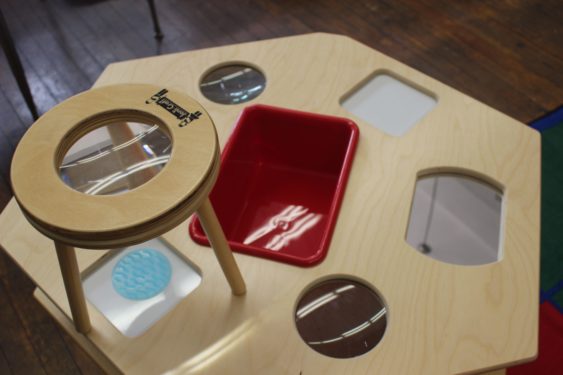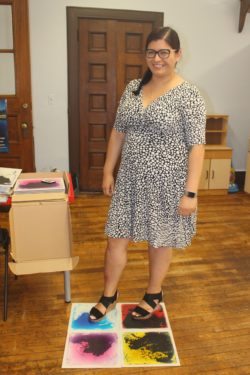
WINDSOR TERRACE – Colorful tables that light up, bouncy balls for chairs, squishable sand and putty to put your hands in — these are not the typical aspects of your average classroom.
A Brooklyn Catholic elementary hopes to incorporate the five senses into one of its classrooms to give the younger students an innovative, colorful way to play while they learn.
This summer, St. Joseph the Worker Catholic Academy, Windsor Terrace, installed new classroom sensory furniture and supplies for its early childhood program.
“The idea behind the sensory space is if you think about little kids who have a lot of energy, and all the sensory overload actually focuses them and calms them a little bit – which is especially helpful for students with ADHD and special needs, and those with sensory processing issues,” said Stephanie-Ann Germann, the school’s principal.
“We want to be developmentally supportive for our students, and it’s something that’s not really happening in our Catholic schools…it’s the whole idea of inquiry learning and sensory play, kids learning through discovery [of their] own.”
Sight, Sound, Smell, Touch and Taste

Sensory processing issues are not a learning disorder or official diagnosis, according to the Child Mind Institute. However, some kids have trouble taking in sensory information — sight, sound, smell, touch, and taste — which can make it difficult for them to concentrate and succeed in school.
While some nationwide schools have introduced sensory hallways, St. Joseph the Worker wanted to make their experience fully immersive — especially for younger, energetic students with sensory processing issues.
“I think there’s a place for it here, because I don’t think any other Catholic school has a sensory room,” Germann said. “The students are learning and sensory matching what they feel — because feeling itself is a sensory input — and converting it into what they know about the world. That’s where the learning comes in.
“It’s especially important for young learners who are developing a sense of the world. They’re able to maintain and sustain attention when they’re in classes and getting direct instruction from their teachers, which then makes our kids successful.”
Teachers and the administration ordered a bunch of kid-friendly sensory toys and furniture over the last few months, with a set budget and feedback from several parents.
The sensory classroom at St. Joseph the Worker includes collapsible furniture, a water basin for making bubbles, bins of colorful kinetic sand and marbles, sticky plastic tiles/circles that squish when you step on them.
Germann said these texture-heavy, colorful and inexpensive tools gives “tactile input and fine motor skills,” and is great for focusing, personal movement and stability.
“It seems that we’re getting more and more children with different sensory issues, and very hyperactive children as well,” said Virginia Gorman, a pre-K4 teacher. “We’ve never felt equipped to meet their needs and the needs of other [students] at the same time, so I’m excited to branch out and reach our students better.”
Annette Scasia, who teaches pre-K3, said she is looking forward to seeing and exploring the room with her students because “each child is going to get something different.”
“We have so many different learners, so this kind of classroom will help enhance their ability to learn very differently,” Scasia said. “It also gives them an opportunity to experience things they wouldn’t normally get to do in a classroom.”
“Just to watch their joy; that’s the best part of working with younger children — watching the lights come on in their head.”
